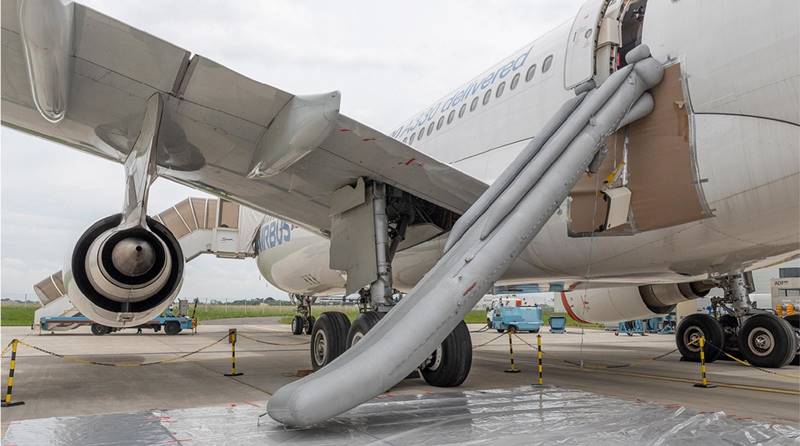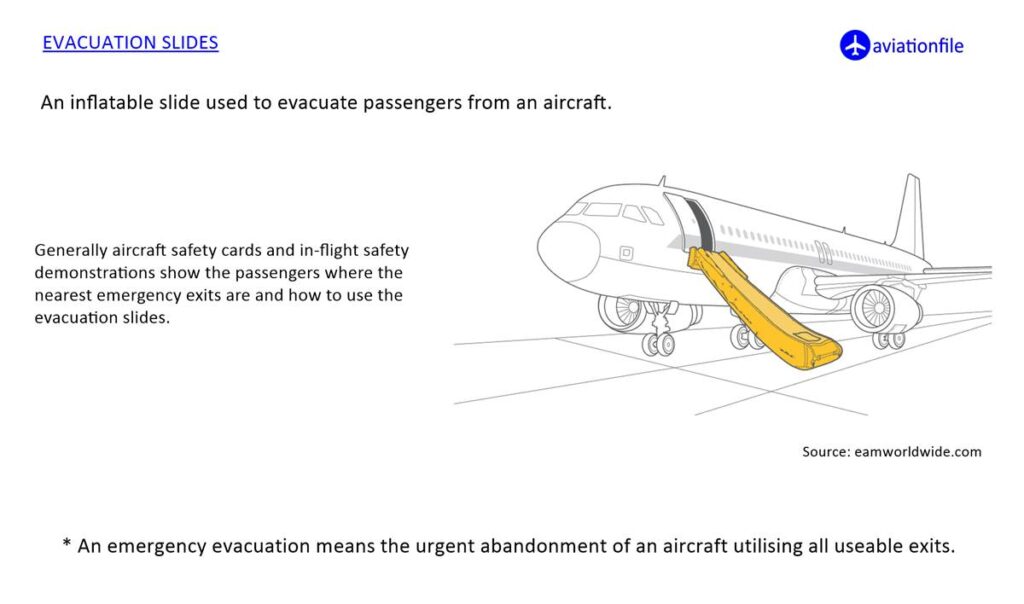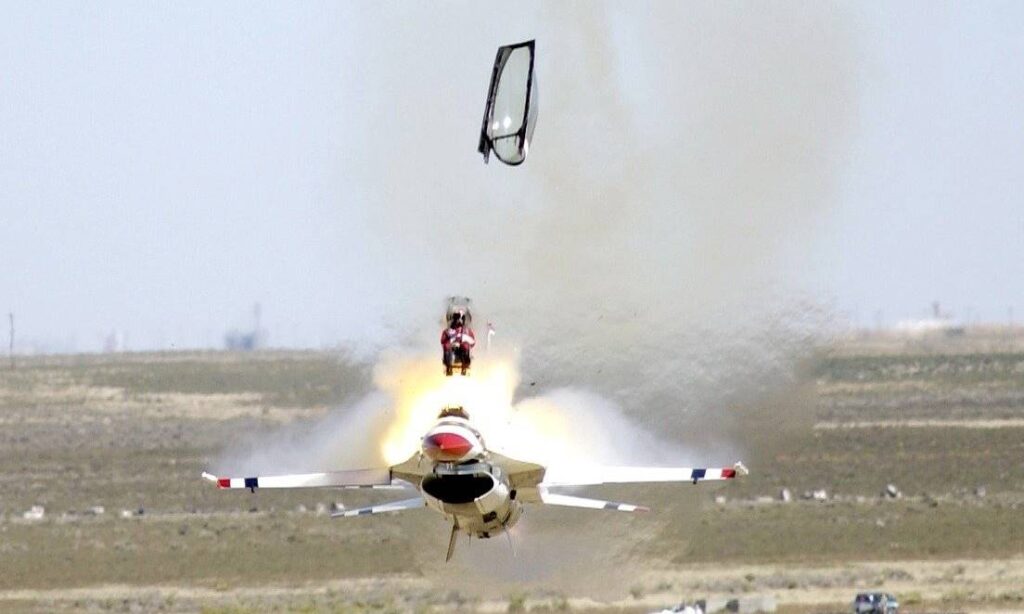Emergency Airplane Evacuation
In the rare but critical event of an aircraft emergency, the ability to evacuate quickly and safely can mean the difference between life and death. Understanding how airplane evacuations work, what to expect, and how to act is essential for every passenger. Here’s a detailed guide on emergency airplane evacuation procedures, vital tips, and why your actions matter.
Reviewing the Safety Information Card
Before takeoff, passengers are encouraged to review the safety information card located in the seat pocket. This card details emergency exits, oxygen mask usage, life vest locations, and evacuation procedures. Spending just a few moments reviewing it can significantly improve your readiness in case of an emergency.
The 90-Second Evacuation Rule
Commercial aircraft are designed and certified to evacuate all passengers within 90 seconds, even if half of the exits are blocked. This FAA-mandated standard underscores the need for urgency and cooperation during emergencies. Rapid evacuation helps minimize exposure to fire, smoke, and other dangers.

Evacuation Slides: Your Lifeline
Evacuation slides are a critical component of emergency evacuations, allowing passengers to quickly descend from the aircraft to the ground. These slides are mandatory for aircraft where the door sill height exceeds six feet. Modern evacuation slides can deploy and inflate within seconds, supporting rapid evacuation efforts.

Evacuation vs. Rapid Disembarkation
Not every urgent exit from an aircraft requires the use of evacuation slides. A rapid disembarkation is a swift but orderly exit using standard boarding doors, typically when there is no immediate threat such as fire or smoke. It’s essential to stay calm and listen to crew instructions to understand the situation.
Using Overwing Exits During Emergencies
Many narrow-body aircraft, such as the Boeing 737 and Airbus A320, feature overwing exits. Passengers seated near these exits may be called upon to assist by opening the hatch and facilitating evacuation. It is important to review the operation instructions provided and be prepared to act if necessary.
The Impact of Passenger Behavior
One of the biggest dangers during an evacuation is passengers attempting to retrieve personal belongings. This behavior can cause dangerous delays, block aisles, and endanger lives. Always leave all carry-on bags behind and focus solely on reaching the nearest exit.
| Passenger Behavior | Impact on Evacuation | Example | Recommendation |
|---|---|---|---|
| Attempting to retrieve personal items | Causes delays, blocks aisles, endangers others | Passengers opening overhead bins during evacuation | Leave all belongings behind |
| Ignoring crew instructions | Creates confusion, slows evacuation, increases injury risks | Refusing to use assigned exit or arguing with crew | Follow crew commands immediately |
| Helping other passengers unnecessarily | Slows personal evacuation, causes crowding near exits | Staying behind to assist someone far away from you | Assist only if directed and safe to do so |
| Blocking or misusing exits | Obstructs flow, may damage evacuation slides | Sitting at exit door without moving quickly | Move immediately through exits after opening |
| Panicking or freezing | Stops flow of passengers, causes congestion | Passenger unable to move after door is opened | Stay calm, focus on exiting |
| Taking videos or photos | Wastes critical time, distracts others | Recording the evacuation process on mobile phones | Prioritize evacuation over documentation |
| Wearing inappropriate footwear | Causes trips, falls, injuries on evacuation slides | High heels getting stuck in slide or stairs | Remove high heels or heavy shoes before sliding |
| Attempting to open wrong exits | May expose cabin to fire/smoke, worsens situation | Opening door facing active fire on one side of aircraft | Wait for and follow crew guidance on exit usage |
Why Following Crew Instructions Matters
Flight attendants are highly trained to manage emergency evacuations efficiently and safely. Their instructions during an emergency are designed to maximize survival rates. Ignoring their commands can lead to chaos, bottlenecks at exits, and increased risk of injury or death.

Understanding the Risks During Evacuation
Evacuations, though life-saving, can involve risks. Injuries such as burns, sprains, or abrasions from evacuation slides can occur. However, these minor injuries are far preferable to remaining inside a potentially dangerous aircraft.
Real-Life Emergency Evacuations
A notable example is British Airways Flight BA2276, which experienced an engine fire during takeoff at Las Vegas in 2015. Thanks to the flight crew’s prompt actions and effective evacuation procedures, all passengers were safely evacuated, with only minor injuries reported. This real-world case highlights the critical importance of following evacuation protocols.
Recommended Article: Delta 767 Engine Fire Sparks Emergency Evacuation at Seattle Airport
Final Thoughts
Emergency airplane evacuations are rare but require every second to be used wisely. Reviewing safety information, listening to crew instructions, and leaving personal belongings behind can dramatically increase your chances of a safe outcome. Stay alert, stay calm, and always be prepared to act quickly if the need arises.


